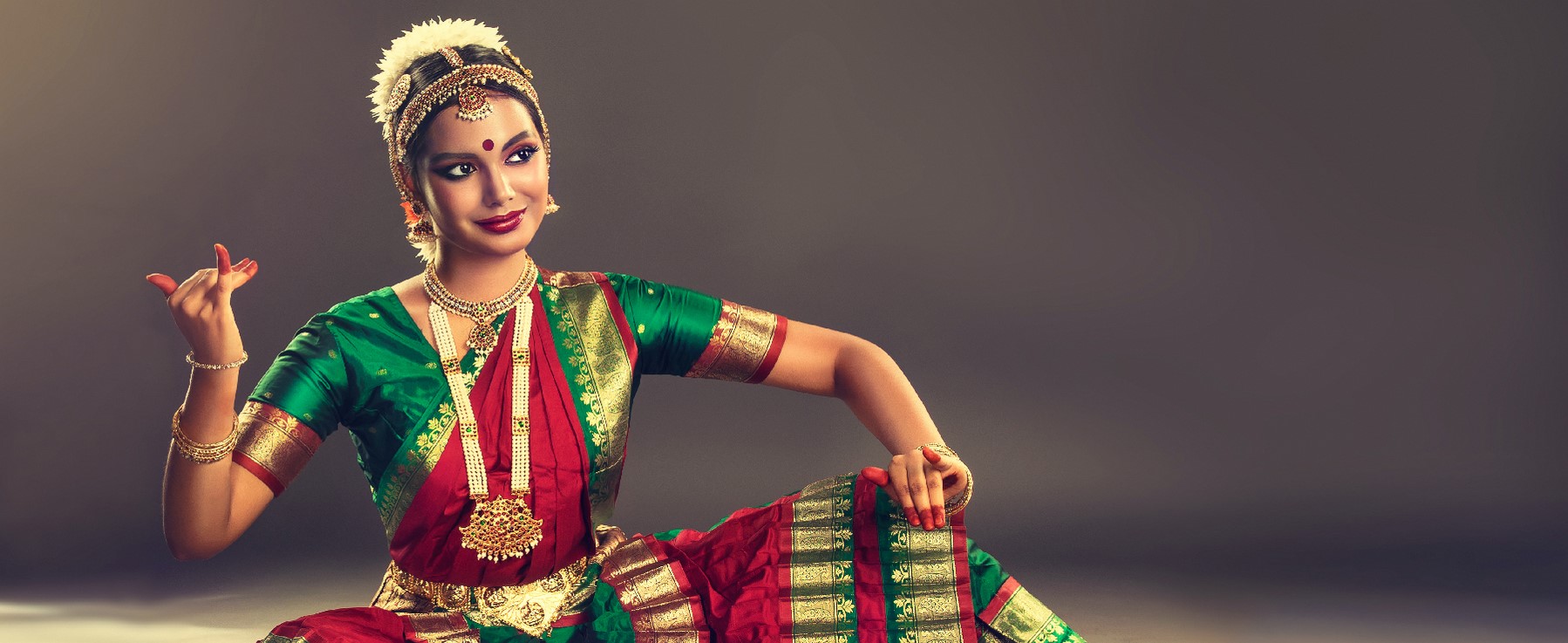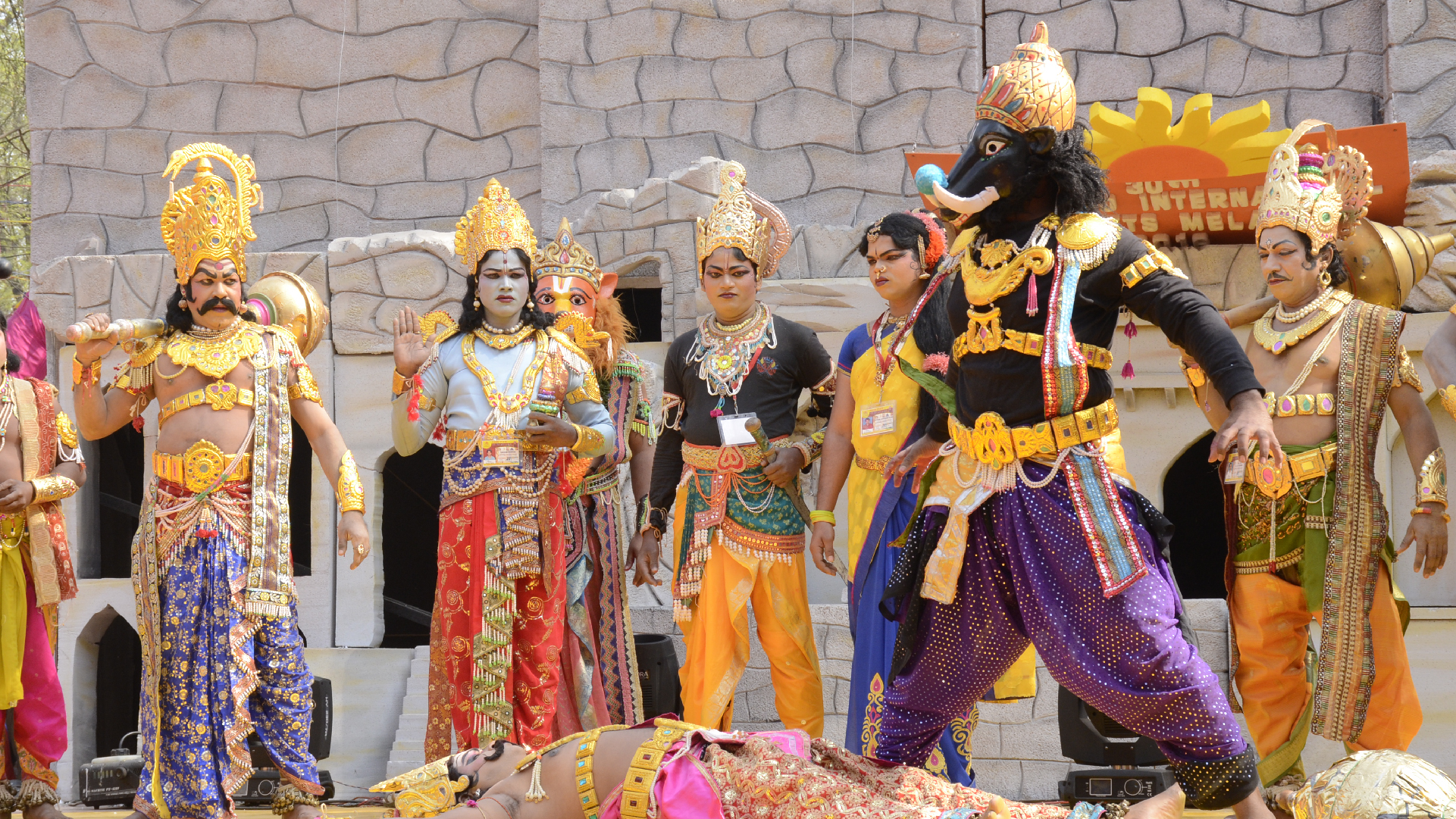
Sorry, we couldn't find anything that matches your search.
Destination

Famous Places to Explore in Hyderabad
A vibrant city with the imposing...

Raipur Tourist Places | Best Place to Visit
The stronghold of several erstwhile...

Ahmedabad
Declared as India's first UNESCO World...
#
Dance is an eloquent form of expression. From classical and traditional to folk and tribal, there are various dance forms in India. The most popularly recognised classical dance forms are eight, which find themselves steeped in a rich mythological and religious history and have been mentioned in the ancient Hindu text of Natya Shastra. These are Bharat Natyam (Tamil Nadu), Sattriya (Assam), Manipuri (Manipur), Kathak (northern and western India), Odissi (Odisha), Kuchipudi (Andhra Pradesh and Telangana), Kathakali (Kerala), Mohiniyattam (Kerala).
Bharat Natyam
Considered to be the oldest dance and an inspiration to all other styles, Bharat Natyam, a temple dance of Tamil Nadu, is an enchanting performance that relates scenes from religious texts and myths. In a series of quick and complicated neat motions, dancers dressed in vibrant attires and ornamented heavily from head to toe, execute moves that are a sight to behold. The continuously varying tempo and the stunning synchronisation of the dancers is a breathtaking sight.

Sattriya
A dance-drama performance, native to Assam, Sattriya dance was created in the 15th century and has been a living tradition since. A regale of religious sagas, it is generally performed in monasteries, where the dancers dressed in stunning pat silks and adorned with traditional Assamese jewellery weave magic to the beats of cymbals, drums, flutes and even harmonium and violin.
Manipuri
Manipuri dance, originating from the state of Manipur, is a spiritual experience that transcends art and seems more like a divine dance. Mostly revolving around Goddess Radha and Lord Krishna, this soft, mild and modest dance form sees dancers execute graceful and delicate movements to lyrical undertones. While the women are clad in a wrap-around skirt called sarong, the men wear a dhoti and a turban.
Kathak
Said to have introduced by the bards travelling around the regions of north India, Kathak involves the recounting of religious tales and legends in a rhythmic fashion. From tapping of feet and hand gestures to eye movements and facial expressions, Kathak leaves one reeling with wonder at the finesse and skill of the dancers clad in a long embroidered skirt, complemented with a choli (blouse) and chunni (a long scarf).
Odissi
Dancers dressed in brightly coloured silk sarees, decked in silver jewellery and musical anklets (ghungroo), perform Odissi, which originated in Odisha. A dance illustrating mythical stories and legends, Odissi involves the use of impressive body movements and excellent expressions.
Kuchipudi
Largely featuring scenes and stories from the life of Lord Krishna, Kuchipudi, from Andhra Pradesh and Telangana, is essentially a temple dance. While a female dancer wears a pleated sari that opens like a hand fan, a male dancer is clad in a dhoti. The dancers are adorned with traditional jewellery and dance to the rhythmic beats of cymbals, flute, veena, tambura etc.
Kathakali
A classical dance-drama native to the state of Kerala, Kathakali is believed to be almost 300 years old. It recounts the tales of the past, from epics, legends and myths, and while the dance and music resound with devotion, what really awes is the striking make-up of the dancers. The participants are clad in elaborate attires and don vibrant hues of make-up. Every flicker of the eye, twirling of the fingers or the quivering of lips has a special significance.
Mohiniyattam
Mohiniyattam is a gentle, graceful and feminine form of dance that originated in the state of Kerala. The dance derives its name from the word 'Mohini', which means the female avatar of Lord Vishnu. Usually performed by a solo female dancer, the performance emotes a play through music and elegant movements. The song is generally a mix of Sanskrit and Malayalam languages.
Dance Festivals
There are hundreds of other folk dance forms which proliferate through the many cultures in the country and which are the life and soul of festivities across regions. The most exquisite way of experiencing these graceful evocations is through the many prestigious dance festivals
The Khajuraho Dance Festival gives its audience the unique chance to see some of the finest dancers from the country, from every genre of the art form, performing in the backdrop of the intricately carved Khajuraho temples. It is a sight not to be missed as the sublime dancers gracefully bring the magic of the stone figurines and rock statues on the temples alive through their poise and elegance.
The Mammallapuram Dance Festival in Tamil Nadu is also a visual extravaganza that unfolds in the backdrop of richly sculpted 8th-century shore temples. The Natyanjali Festival, a five-day gala is also held in Tamil Nadu. It begins on the auspicious day of Mahashivratri and the backdrop is the beautiful temple which is more than a thousand years old.
Another event that must be on every traveller’s itinerary is the Konark Dance Festival in Odisha. Famous for the mighty Sun Temple, Konark is flooded with artists and connoisseurs from across the country because of this. Simply not to be missed at this festival are the performances of the classical dance form Odissi, as well as the regional dance forms like Gotipua and Mayurbhanj chhau.
The Mukteshwar Dance Festival, held at the 10th-century temple of the same name also takes place in Odisha. It is an understatement to say that it is a visual treat. Nishagandhi Dance Festival, held in Kerala, is another event which should be witnessed at least once. Even though all forms of classical dance are invited and performed, the Kathakali fest is a great crowd puller and should not be missed.
Apart from these, there are many folk art forms which are either purely dance forms or incorporate dance and drama to create popular as well as interactive performances like the Lavani in Maharashtra, Bhangra in Punjab, Garba in Gujarat, Bihu in Assam, Jhumair in Jharkhand among so many others!









